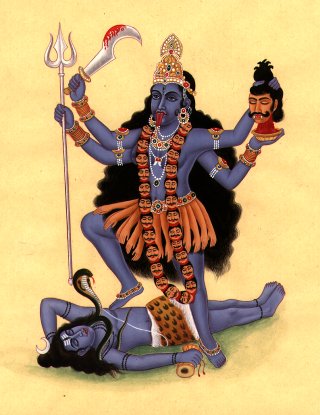 |
Many believe that the willingness of Hindu Goddess tradition to incorporate what would be seen as "secular" aspects like modern technology and politics has strengthened the scope and power of the religion. Goddess tradition has not adhered to a strict separation between the sacred and the secular. Because it has not placed itself in opposition to modern things, many believe it has not been gravely threatened by modernization. |
| The increased accessibility of the Goddess - even outside of her homeland - and the fact that many devotees are deciding without the use of priests or even Hindu scriptures what the Goddess means and how to worship her seems to be very democratic. However, some are understandably concerned that her true essence and religious meaning is being lost in the process. (Rachel Fell McDermott, "The Western Kali" in Devi: Goddesses of India) |  |